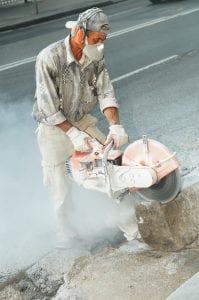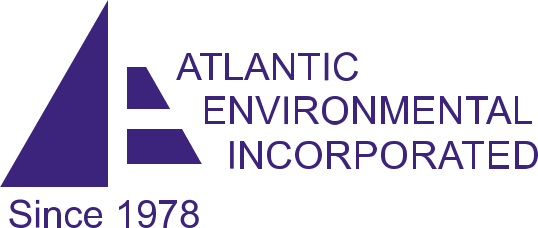Written By: Robert E. Sheriff, MS, CIH, CSP, President
December 9, 2019
OSHA issued the final rule for new regulations for exposure to crystalline silica on March 23, 2016.
Summary of OSHA Regulation

Separate regulations were issued for Construction (29CFR1926.1153) and General Industry/Maritime (29CFR1910.1053).
The general provisions to both regulations are generally the same:
- Permissible Exposure Limit (PEL) over an 8-hour shift is 50 mg/M3 of air.
- Action Level of 25 ug/M3.
- Requires employers to use engineering controls to limit worker exposure where sampling indicates a level above the PEL.
- Respirators as a supplement to engineering controls where such efforts won’t adequately control exposure.
- Develop a written control plan.
- Medical exams.
- Training.
- Final Rule took effect on June 23, 2016, (60 days after publication).
Compliance dates for the separate regulations are different:
For Construction, the effective date was September 23, 2017.
For General Industry and Maritime, the effective date was June 23, 2018.
NOTE: Hydraulic Fracking, although part of Construction, had an effective date of June 23, 2018 but engineering controls have a compliance date of June 23, 2021 (5 years!)
There are many activities in Construction and Industry where exposures have not been well controlled. Also, the previous regulation had a formula for calculating the exposure level (the greater the % silica the lower the PEL) which was confusing and difficult to explain.
The new standards have a lower PEL and more protection of workers but also easier to comprehend and explain to involved employers and employees.
Possible Sources in Construction
From experience, the most likely sources of overexposure in Construction are:
- Dry concrete cutting.
- Sand and gravel operations.
- Concrete mixing—including Redimix.
- Mining including rock, salt, coal, other minerals.
- Construction excavation especially where rock is involved.
- Dry aspects of fracking—all stages.
- Some dust cutting operations.
Possible Sources in General Industry
- Sand and concrete/mortar packaging.
- Stone cutting both dry and wet.
- Marble cutting both dry and wet.
- Brick and block manufacturing.
- Gravestone cutting and lettering.
- Countertop manufacturing.
- Refractory products (bricks and cement).
- Glass manufacturing.
- Foundries especially sand casting.
There are many other commercial activities that handle sand as part of their processes—both in the Construction and General Industry. The best approach is to carefully review the Safety Data Sheets (SDS) for all raw materials to determine if silica is present in reportable quantities. If so, it is prudent to have the work activities that use those silica-containing raw materials monitored. The proper method of sampling is the use of a portable air sampler worn by the worker for a full work shift. Samples will be analyzed for respirable dust and silica and compared to the 50 ug/M3 PEL and the 25 ug/M3 Action Level.
The final rule can be found on OSHA’s website at www.osha.gov/dsg/topics/silicacrystalline/
Solutions to overexposure are widely varied. OSHA has established specific approaches depending upon the work activity. Consult the appropriate OSHA Standard (Industry or Construction) for specific requirements.
The most common approach is to convert a dry process to wet methods.
Wet Methods Not A Guarantee of Compliance
Wet methods by themselves are not always totally effective simply because a very fine mist can also carry the silica particles in such a size range that they can be inhaled.
The first step is to monitor the worker’s exposure through personnel sampling/testing.
The sampling results will determine what actions are needed (if any) to achieve compliance.
Atlantic Environmental has the capability of monitoring worker exposure, developing control plans and performing the necessary training, as well as recommending solutions to identified problems.
If you need assistance in interpretation or compliance with the new OSHA Silica Regulations discussed in this article, call us at 973-366-4660 or e-mail us at info@atlenv.com for details and a free estimate.
Our primary service areas are: NJ, NY, NYC, PA, CT, DE, (Boston) MA, RI, Wash DC, WI, MD, MI, (Chicago) IL, VA, IN, (Atlanta) GA, AL, NC, SC, TN, (Dallas, Ft Worth) TX, OK, DC, AR. We can service most other areas of the U.S. but with some added travel charges.



